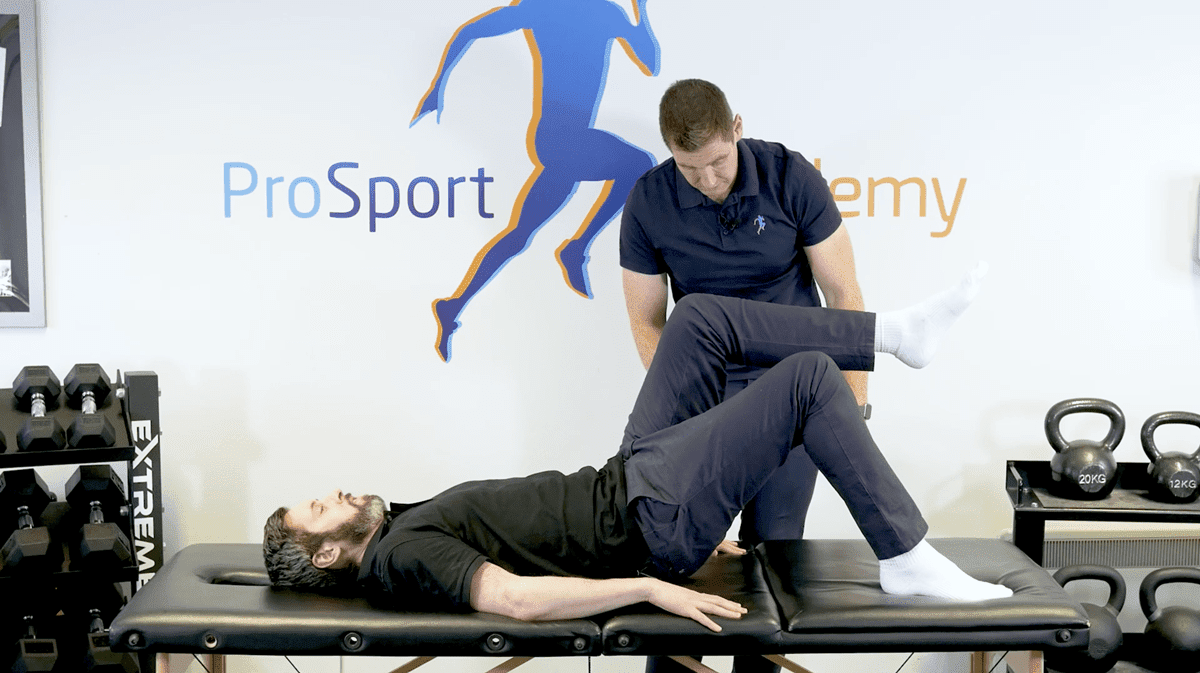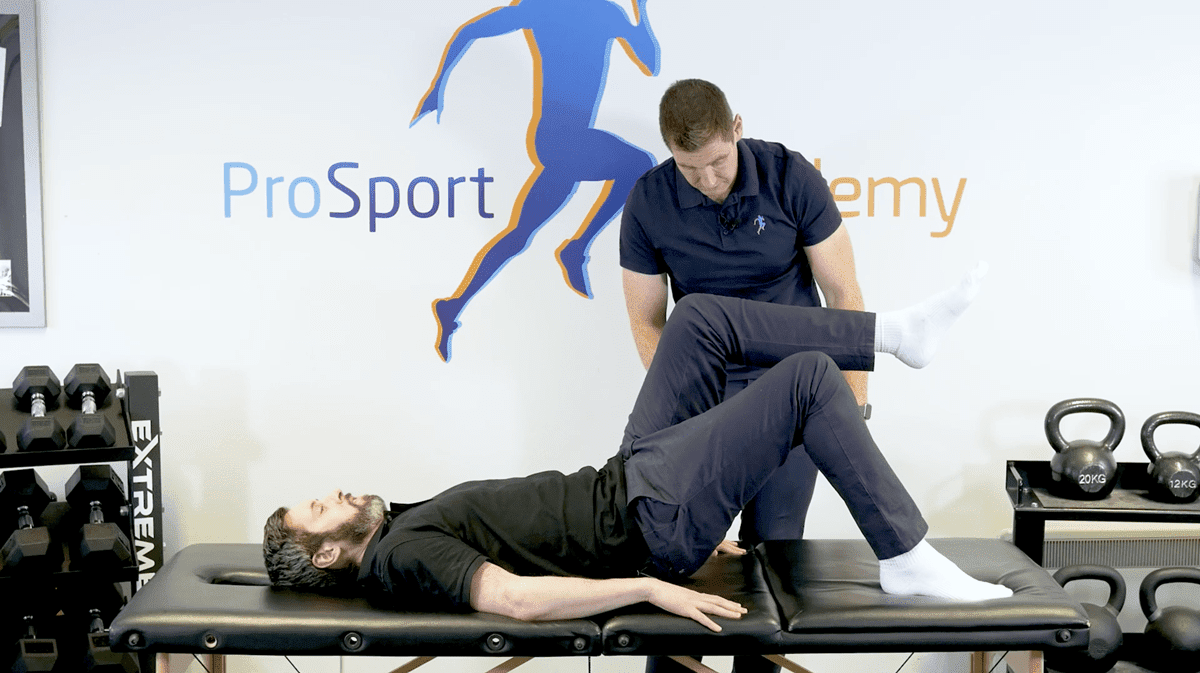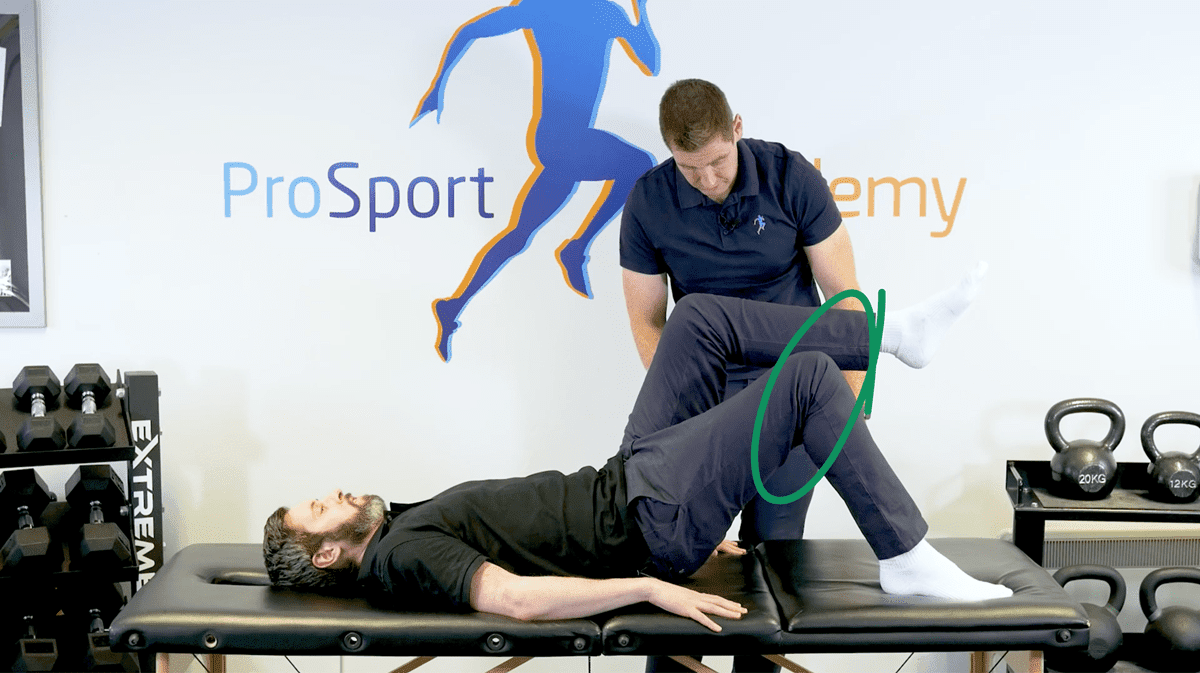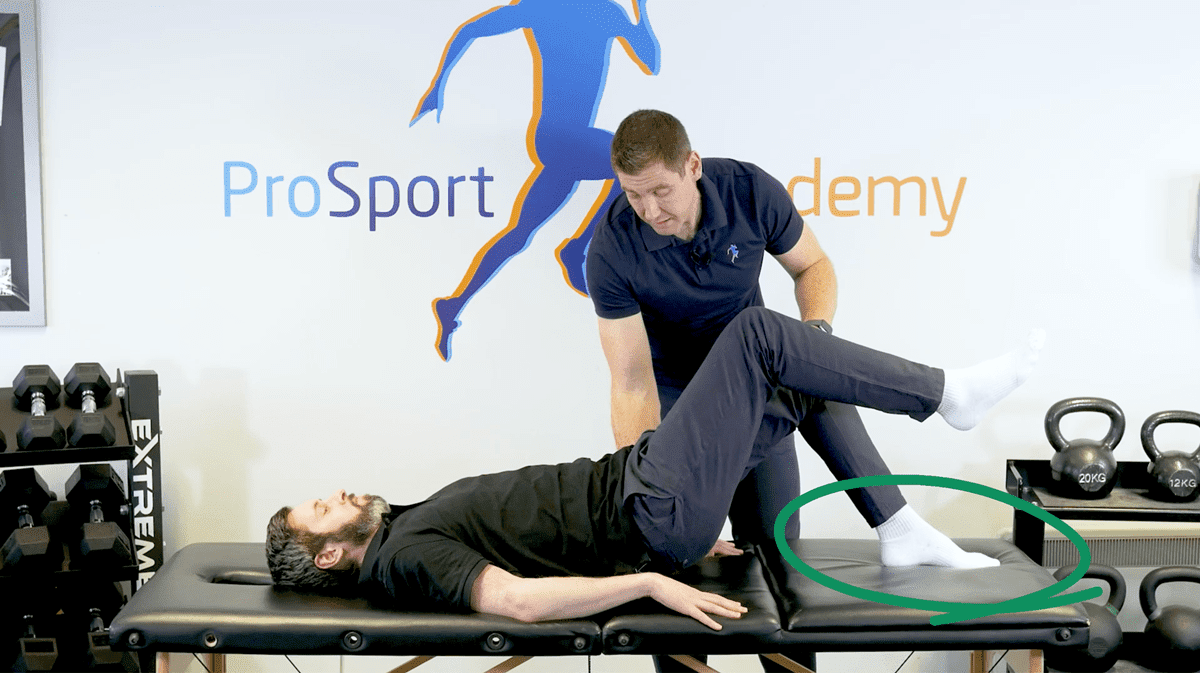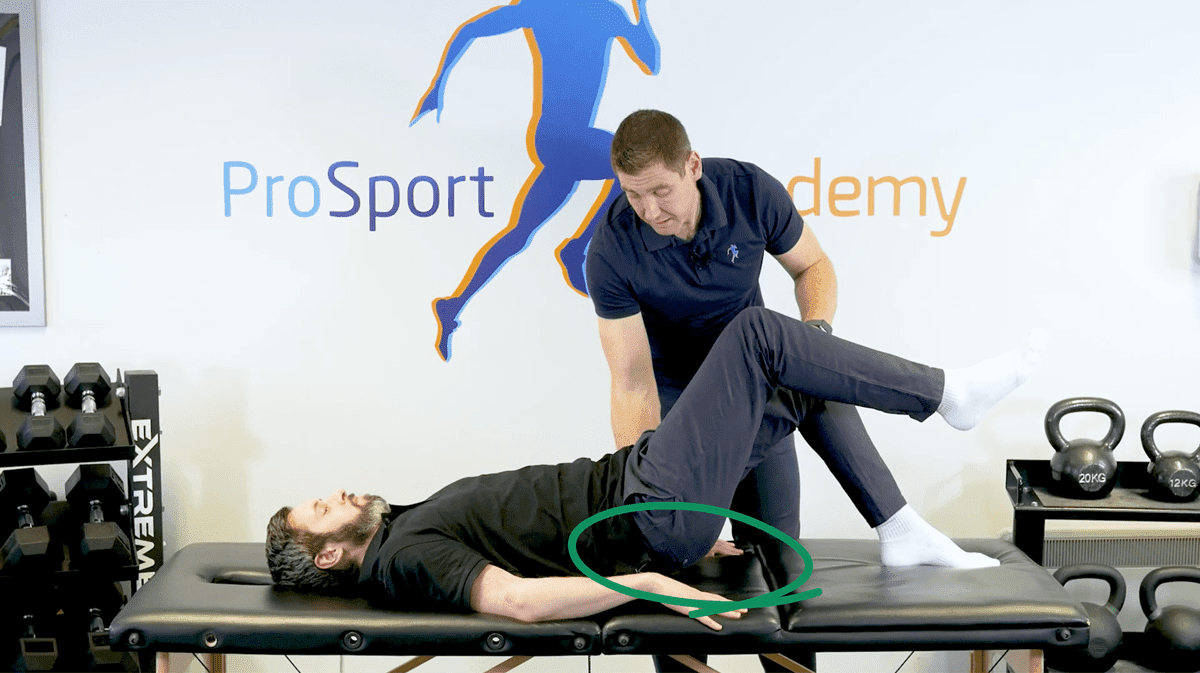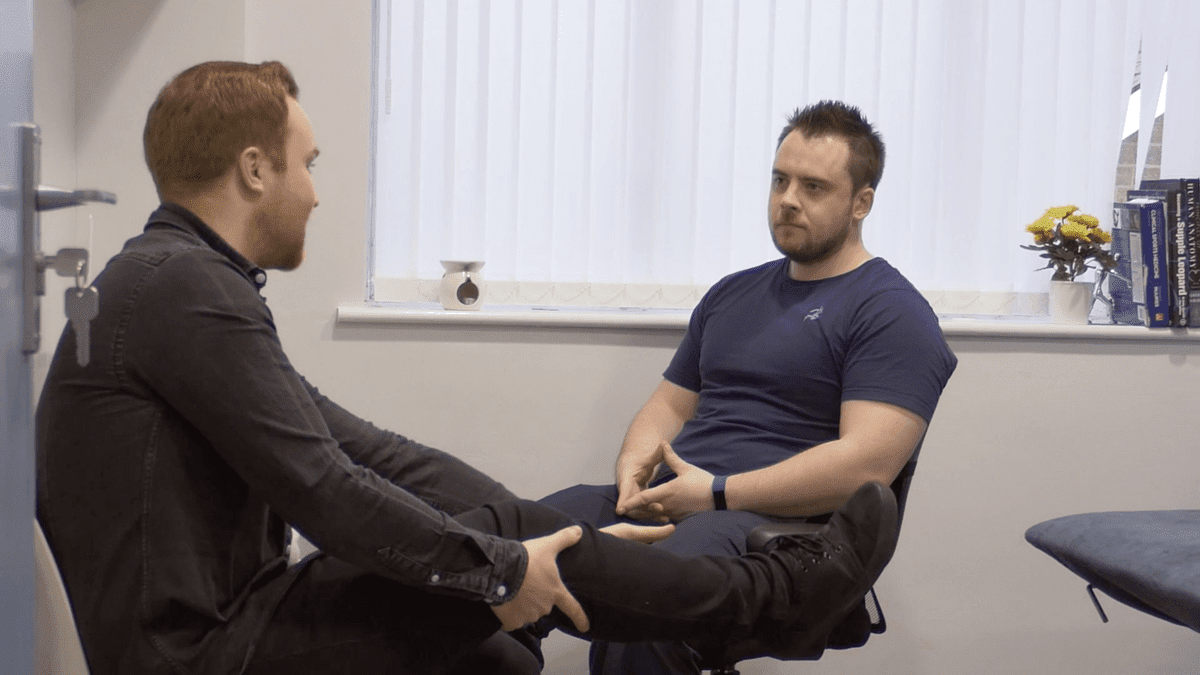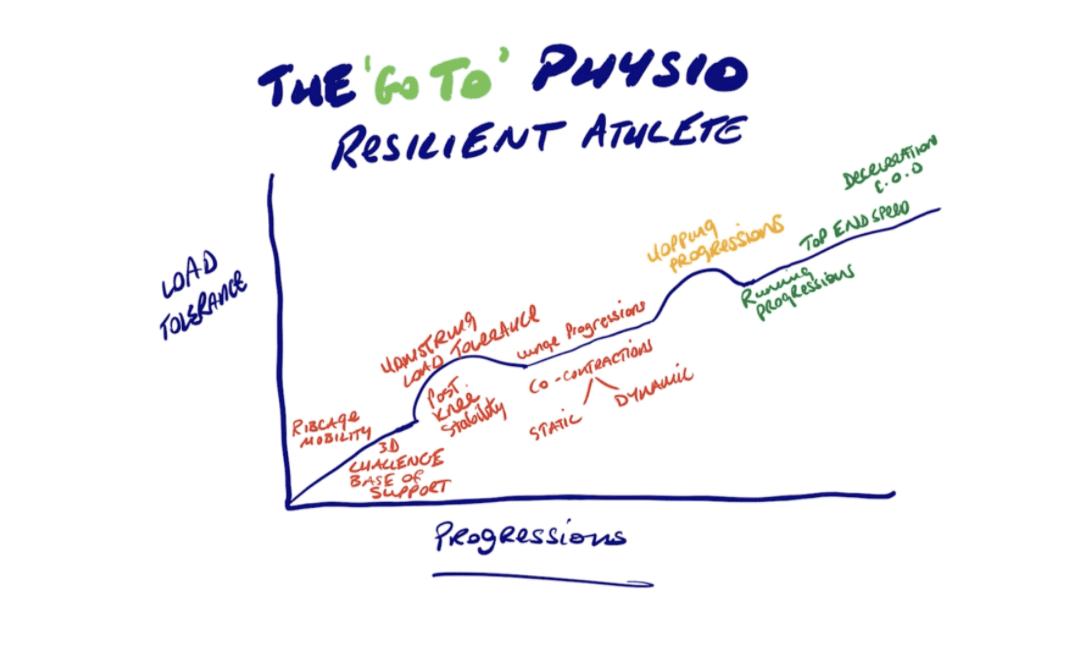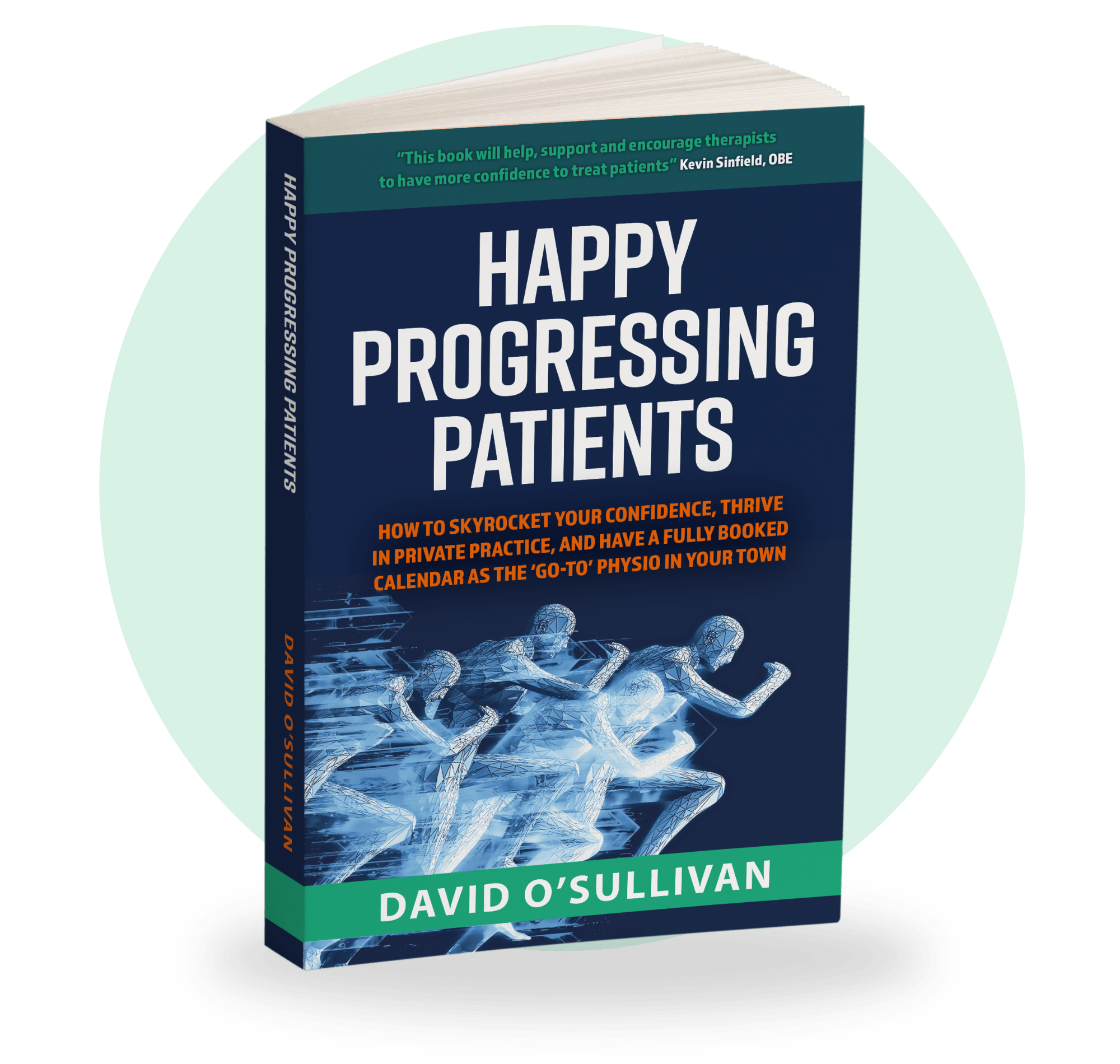
Over the years hamstring injuries have given me a lot to worry about. I’ve taken on athletes with potentially career-ending injuries and non-sporting patients who are desperate to get back to running. The pressure is always on you to make real changes.
The problem is, that hamstring is going to have to take a lot of loading. So if you’re not sure what exercises to use, if you’re not sure your patient is ready to progress, if you’re wondering you’re on the right track or ‘hoping’ your patient is ready to run then you’re risking everything.
If you are unclear on anything you risk flare-ups, you risk your patient’s health, your results, and that reputation you have been working tirelessly to build.
Well, today I want to share one of the most powerful isometric exercises I have ever used in my hamstring rehab. Used correctly, it will change the way you work. You’ll have an exercise but you’ll also have a valuable clinical tool that gives you clarity on when to progress with your hamstring patients…
How? Well, just read on to find out.
We’ll cover;
- An introduction to hamstring strains and injuries.
- Your approach to a hamstring injury.
- Isometrics vs. eccentrics.
- My favourite isometric hamstring exercise.
- The key to implementing this exercise.
- Three ways to make this exercise work for you.
An Introduction To Hamstring Strain And Injuries
As a therapist, you probably don’t need an introduction to hamstring muscle injuries but they can be underestimated often enough.
In a 2016 study, Roe et al found that hamstring injuries are the most frequent injury in elite Gaelic Football but the effects of the hamstrings reach further than just one sport. In a later study, Ekstrand et al found that 22% of all football players experienced at least one hamstring issue over the season.
Hamstring injuries are a real problem for professional or amateur athletes, but the dangers aren’t just limited to your sporting patients. In a 2016 paper, Kuske et al highlighted a ‘largely unrecognised population of adults suffering hamstring injuries from low-impact activities.’
The evidence for just how prevalent hamstring injuries are could go on for days. But what does this actually mean for you?
Well, it means that as a therapist working in professional sport or private practice you’re probably not going to get away lightly. The likelihood is that at some point or another you’re going to find yourself in the assessment room with a particularly bad hamstring strain injury.
It is your job to deal with it. Your reputation hinges on those results. So what do you do?
Your Approach To Hamstring Strain
Before I share my favourite isometric exercises, let’s talk about you. What is your approach to a hamstring injury?
You make an assessment, look at your patient’s movements, rule out red flags or hamstring tendinopathy, maybe you try some hands-on, restore some range of motion, and attempt to improve hamstring strength? You’re just trying to get rid of the pain and symptoms right? Well, there are a few problems I see time and time again.
Firstly, most therapists are just looking to shift the pain. They want their patient pain-free and that’s it. They use an exercise or technique and get so far. The patient may be pain-free but they have no proof that this person is ready to tolerate higher loads.
They don’t truly know if their patient’s hamstring muscles can tolerate the load needed to run and they risk further injury or pain by saying those hopeful words ‘yes, you can run’. Well, there shouldn’t be anything hopeful about it.
The second issue I always see is a therapist second-guessing themselves. The problem here is a lack of confidence and a lack of planning. You’re just working session to session.
But if this is the case, you can have all of the best exercises in the world but if you don’t know how they all fit together in your graded exposure rehab program, if you don’t know how you’re going to achieve the end goal, then how can you be confident you can make real changes with that hamstring injury?
The isometric exercise I will share with you in just a moment is incredibly powerful but it will only work for you if you have confidence and clarity to know when to use it and how it fits into your rehab.
Isometrics Vs Eccentrics
As therapists, we are all obsessed with the latest technique. Everyone has their go-to type of exercise. We are quick to learn a new one and drop others when they go out of fashion. In reality, it isn’t a ‘one size fits all’ kind of deal.
After years of spending valuable time, energy, and money learning these techniques I realised one thing. It doesn’t matter if it is isometrics or eccentric exercises. It doesn’t matter if it is ‘cutting edge’. At the end of the day, it is about getting a result.
It is about picking and choosing exercises based on the person in front of you. It is about you knowing how those exercises fit into your graded exposure rehab. If you’re not confident on why you’re using an exercise or just using it because it is the ‘next big thing’, you need to take a step back and really look at your rehab process.
If you can’t address your own systems, if you don’t have a structure that gives you the confidence and clarity to achieve real results with the most complex of cases then maybe this exercise won’t work for you. Only once you do that can you truly begin to build successful patients?
With that being said, out of all hamstring exercises, I have one that stands out above all of the other isometric exercises. So let’s dive into it.
My Favourite Isometric Hamstring Exercise
I have done a video or two on this particular hamstring exercise before and I can’t understate how powerful it has been for me in my clinic. So how do you do it?
Have your patient lie on a bed or on the floor. You want one leg bent and planted on the bed and one leg raised in the air. This is your classic single-leg bridge position.
But this is where it starts to differ from that traditional single-leg bridge. From this position you want your patient to lower so their glutes are just off the bed. Take all weight off the heel so it is directed through the midfoot and forefoot.
And that is it. The single-leg bridge through the midfoot. It is that simple. But just because some exercises seem simple doesn’t mean there aren’t some important fundamentals behind them that you must understand…
The Key To This Single-Leg Bridge Through The Midfoot
Before you dive in and start using this exercise straight away we have to cover just why we want these small variations and how it really works for your patient.
Bending The Knee
Firstly, you don’t want the knee of the planted leg too far into flexion. Equally, you don’t want too much of a straight leg so they’re almost lying down. All we want to do here is to recreate what happens as the foot hits the floor and goes into plantar flexion.
Keep Pressure Through The Midfoot
When it comes to the traditional single leg bridge, so many therapists ask their patient to keep their weight through the heel. Here is where this particular isometric exercise comes into its own.
As your patient goes through these motions you must make sure they keep weight off the heel of the planted foot. You want all of that weight through the midfoot and forefoot.
But why is this so important? Well, when we lift the heel we are trying to shorten the gastroc. Because the gastroc and hamstrings are synergists, by shortening the gastroc we are making the hamstrings do more. We essentially want to overload and truly test those hamstrings.
If your patient does keep weight through the heels then they can’t plantarflex and can’t get the distal hamstring and proximal gastroc engaged and transmitting force through the whole body.
Keep The Glutes Close To The Bed
Finally, throughout the bridge, you want to make sure the patient’s glutes are just a fraction off the bed. The lower the hips and the glutes are to the bed the more load tolerance we will get through the hamstring. The higher the hip is off the bed the more the low back will take some of that load. We are trying to put load through the hamstring muscles, not the stress the lower back.
Three Ways To Make This Isometric Exercise Work For You
The beauty of this particular isometric exercise is that it serves more than one purpose. Of course, you are trying to promote load tolerance through the hamstring but there are other factors at play.
So here are three reasons why this isometric exercise is so much more than just an exercise.
1) Using This Exercise As A Test In Your Assessments
Another function of this exercise is testing. You are testing load tolerance through the muscle fibers of the hamstrings. Once you look at it in this way it can change your perspective.
If you can make sense of your patient’s reaction then it can be an incredibly useful guide as to what steps you may need to take next.
For example, if the patient started to bring their glutes and hips away from the bed I would interpret that as a lack of intent to push through the foot, especially the midfoot and forefoot. I would be suspicious that we may have a little protective tone through the hamstrings.
We want to tolerate load without the hamstring cramping. If they do cramp then it means the nervous system may not be happy to tolerate load. If that is the case then you need to take further action.
2) Turning This Exercise Into A Powerful KPI
If you are familiar with any of the mentorship content you’ll know just how much value I put on KPIs. But there is a good reason for that.
Throughout your rehab, you need a way of knowing how you are progressing with that hamstring injury. Too many people sit back and use guesswork. That is why with the mentorship we combine a simple step-by-step system with the use of KPIs so you know your patient is ready to progress.
Once you use the single leg bridge through the midfoot it becomes a powerful key performance indicator. If your patient arrives for their next session and struggles to perform when they managed it in the last, then this is going to be a great indicator that there is more work to do.
3) Where It Fits Into Your Rehab
Finally, the real key to this isometric exercise is how it fits into your rehabilitation process and exercise program.
For me, I don’t just use this exercise for hamstrings. It is a powerful addition to lower limb injury rehab because it acts as an indicator.
You overload the hamstring muscle fibers so you know the patient can tolerate the loading that is needed to get them up into standing rehabilitation. You know for certain that they can progress but equally, if your patient struggles to perform the exercise then there is probably more work to be done before they can progress.
You can see clearly in the rehab graph below that it sits as our very first safety net. You know your patient can tolerate load so you don’t have to second guess yourself. You don’t take a patient to end-stage rehab without knowing they can handle it so why do it any other time?
Final Thoughts On Your Isometric Hamstring Exercises
It is easy to get caught up in a new exercise or technique but there is one thing you have to remember, an exercise is only ever as good as the therapist that uses it. You may be able to implement the exercise but if you don’t have the confidence and clarity to back it up then is it really going to make a difference to your outcome?
I’m a firm believer that every therapist deserves to reach their full potential if they’re willing to put the time and energy in. I want every therapist to have the confidence and clarity so they can achieve real results with even the most complex of cases. And that is exactly what we do in the Go-To Therapist Mentorship.
We don’t teach ‘magic’ new exercises that will change your life, we teach principles and a simple step-by-step system that allows you to build successful patients and a successful clinic.
If you want to join over 700 therapists worldwide already implementing a step-by-step system that gives you the confidence and clarity to find and treat the true cause of your patient’s pain, cement patient adherence and build world-class treatment plans… Click the link below and book your FREE 30-minute strategy call today.
Get Your FREE Copy Of The Amazon #1 Bestseller That Holds The Secret To Confidently Treating Any Patient!
Download a Free ‘ebook’ copy of the 8-Step ‘World Cup’ Treatment Plan that helped my private patients achieve full recovery and made me a ‘go-to’ physio for complex cases…
